Copyright by and reproduced with permission from Devon Peña, Professor of Anthropology, University of Washington, Seattle WA.
The ecology of imperialism
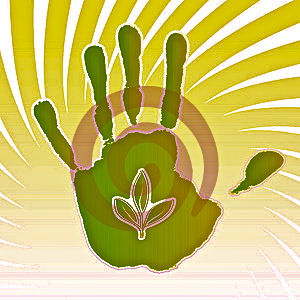
One of the most profound and enduring consequences of the conquest and settlement of Abya Yala (North and South America)[1] by Europeans was the displacement and destruction of native biological and cultural diversity. The environmental historian Alfred Crosby has called the European invasion of the Americas [sic] a biological conquest and a form of “ecological imperialism.”[2]
The British and other European powers were not just globalizing military forces. Theirs was the “Empire of the Dandelion,” a phrase that pays tribute to the hardy and profligate European weed that spread to every nook and cranny of the Earth that was forcibly colonized by the invaders.
Spreading from its home range in northern Europe, most likely by hitching a ride in hay feed, the dandelion (along with clover and other introduced species) displaced native plants across Abya Yala. This happened from lowland coastal deserts and shrub lands to the highest mountain forests and alpine tundra. No space or native habitat touched by colonialism was spared the effects of this bio-invasion.
Wild native plants and animals were not alone in suffering harm. The diverse indigenous plants and animals that native peoples hunted, gathered, or cultivated were also diminished by the violence and displacement associated with the arrival of European colonizers and their biotic baggage. The principal icons of this history of displacement are well known: Cattle displaced bison; sheep replaced native deer; wheat displaced maize and amaranth.
Ironically, while indigenous populations starved or suffered malnourishment during the so-called Colombian Exchange, Europeans and others benefited from the arrival of the crops of Native America including amaranth, agave, avocado, bean, bell pepper, cashew, cassava, chili, cocoa (for chocolate) corn, guava, peanut, potato, pumpkin, tomato, vanilla, wild rice, and many more.
It is well known that in the case of Mexico, over a very short period of time (1519-1790), the indigenous population was thoroughly decimated, declining from roughly 10 to only 1 million people in the Central Plateau region of what is now the Greater Mexico City metropolitan region. Similar collapses occurred across Abya Yala as indigenous populations declined by 70 to 98 percent.
This demographic catastrophe was the result of genocide through war, enslavement and forced labor, introduced disease (smallpox, measles), and widespread hunger and malnutrition.[3] Many people were worked or starved to death in mines, plantations, and obrajes, the earliest forms of the dreaded industrial sweatshop.
Where native labor could not be exploited, war was waged to take the territory and make room for the exploitation of imported slaves laboring on plantations. These patterns of death and destruction were repeated across the continent including in the stolen lands that became the United States and Canada.
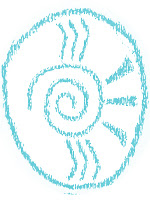 The roles of historical trauma and structural violence
The roles of historical trauma and structural violence
Eating poorly is not a case of persons making “poor personal choices” or engaging in “bad individual behaviors;” it is a matter of systematic discrimination and structural violence.
Ecological imperialism has had many effects. In more recent times, we have become more aware of the peculiar form of death facing Native peoples as a result of processes that Russel L. Barsch calls ecocide, or death caused by destruction of indigenous ecosystems including the agricultural and food systems of entire cultures and civilizations.
Scholars in the field of the anthropology of food and nutrition call this nutricide, or genocide by means of the denial of culturally appropriate nutrition. This is a major problem facing indigenous peoples in the United States.
Research is demonstrating that access to traditional foods – the nutritional substances a given people co-evolve with over generations of living and adapting to place – is essential to our health. Thus, eating poorly is not a case of persons making “poor personal choices” or engaging in “bad individual behaviors;” it is a matter of systematic discrimination and structural violence when people are denied access to the resources they need to maintain their own indigenous food traditions, cuisines, and diets.
According to Barsh[4] and Gary Paul Nabhan,[5] among others who have documented the devastating effects of nutritional genocide in their studies of Native Americans in the Pacific Northwest and Southwest, this violence affected what people ate and how they ate it. The health effects are still being amplified by institutional racism and colonial domination and the ecological wreckage left in the wake of conquest, enclosure, and domination.
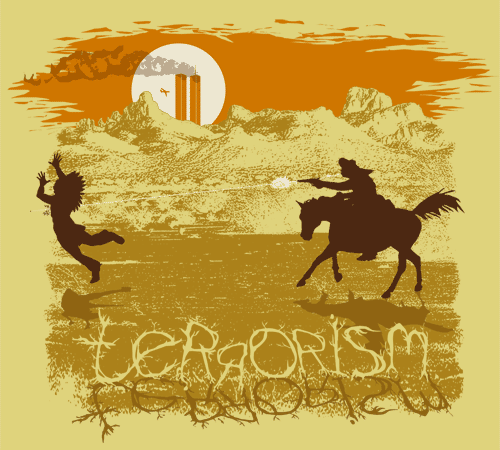
Writing on the O’odham in Arizona-Sonora, Nabhan makes an important point about the co-evolution of diet, metabolism, and health:
O’odham elders relate their culinary traditions to their health and survival. The elders not only recall “survival foods” used during times of drought and political disruption but they also remember the curative quality of the native foods that were a customary component of their diets. These curative properties are now being scientifically investigated…native foods may be the best medicine available to the O’odham. The O’odham metabolism evolved for several thousand years under the influence of a particular set of native desert plant foods with peculiar characteristics that…protected the people from certain afflictions now common among them (p. 201-202).

Historical trauma is not just something that happened a long time ago and has some sort of “echo” in present generations. It is that and much more. It is a recurrent form of trauma that affects entire communities because the violence and discrimination is directed at the collective and not just individual members of the culture. The shock and trauma is experienced over and over again and the effects of this suffering are transmitted from one generation to the next.
The effects of historical trauma include alcoholism and substance abuse, domestic violence and child abuse, malnutrition, obesity, and cardiovascular illness. The loss of our traditional foodways, cuisines, and farming systems has been a major factor underlying this silent genocide.
My colleague Karina Walters[6] is among the growing number of Native scholars documenting and organizing interventions to address the detrimental health effects unleashed by inter-generational historical trauma and structural violence associated with these attacks on Native food systems and the alcoholism and substance abuse that are also implicated in these legacies of conquest and marginality.
A related damaging force is explained by the concept of structural violence. Dr. Paul Farmer provides a clear definition:
Structural violence is one way of describing social arrangements that put individuals and populations in harm’s way… The arrangements are structural because they are embedded in the political and economic organization of our social world; they are violent because they cause injury to people … neither culture nor pure individual will is at fault; rather, historically given (and often economically driven) processes and forces conspire to constrain individual agency. Structural violence is visited upon all those whose social status denies them access to the fruits of scientific and social progress.
Some widely studied examples of structural violence include violence and discrimination directed against groups based on their class, race/ethnicity, gender, sexual orientation, age, religion, national origin, and citizenship status. Studies suggest that structural violence is strongly correlated with direct violence and this includes family violence, racial violence and hate crimes, terrorism, war, and of course genocide.
Perhaps the most pernicious form of structural violence is that which proceeds through silent erasure. The forced eradication of Native foods, foodways, and farming traditions has caused grave damage to people and the land. But the silent killer of nutricide is being challenged.
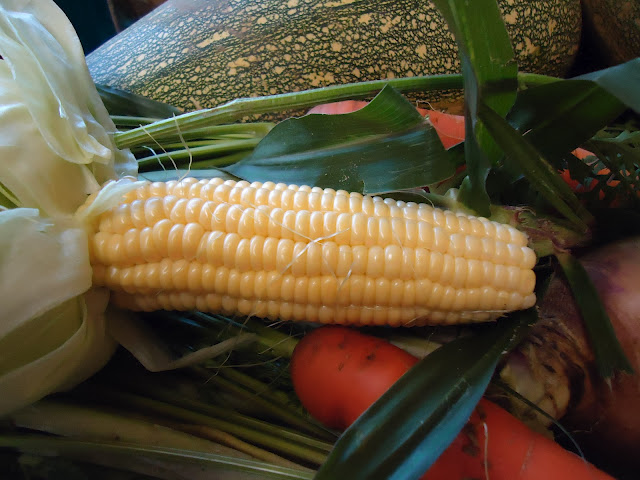
Deep food: Healing through heritage cuisine
Native peoples are resilient and we are actively organizing to reverse the damage produced by centuries of historical trauma and structural violence. Across Indian country today, we are witnessing the emergence and florescence of a pivotal movement involving the recovery of ancestral food crops, wild plants, and heritage cuisines.
This is a movement that I like to call “deep food” to distinguish it from the “local” and “slow” food movements because this is about the recovery of the deeply-rooted ancestral foods and food ways of the First Peoples.
This indigenous food justice and autonomy movement establishes or strengthens critical links between First Foods and the revival of heritage cuisines. They are also creating or reviving stronger linkages between a sense of place, respect for and assertion of treaty rights as civil rights, and the restoration of traditional hunting, foraging, and farming methods and principles.
This last part, the restoration of the traditional agroecosystems is an issue that lies at the heart of many of the projects supporting indigenous food autonomy.
In communities across Indian country, efforts are underway to help Native Americans reclaim their health and well being through the power of traditional foods and cuisines in concert with the restoration of traditional food production systems and the re-assertion of treaty rights and obligations.
An important part of this work involves establishing community gardens, home kitchen gardens, agro-forestry mosaics or “food forest” projects, and many other innovative campaigns.
There are many inspirational projects aiming to heal Native Americans through the power of First Foods and the restoration of heritage cuisines and indigenous agroecosystems, i.e., traditional Earth-honoring ways of farming, foraging, hunting, and fishing for original foods. Here are two examples from our region in the Pacific Northwest.
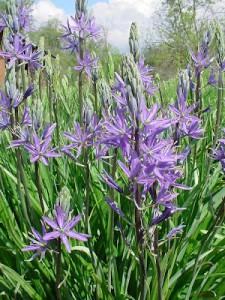
Skokomish First Foods Sovereignty
The Skokomish community garden and elder/youth mentoring project will reintroduce traditional native plants, game, and vegetables such as camas and medicinal herbs to a community actively seeking physical, mental, and spiritual healing from the effects of intergenerational trauma caused by colonization and forced assimilation policies of the U.S. government. The project envisions a return to heritage cuisines as a route to improving health through traditional tuwaduq first foods.
Numerous clinical and ethnographic studies confirm a strong association between the decline of traditional foodways and the higher incidence of obesity, diabetes, and cardiovascular illnesses.
New studies in nutrition science and anthropology of food are demonstrating that we can eliminate the debilitating negative health outcomes for the community by promoting a return to first foods, and heritage cuisines. This project illustrates the strategy of eating local, slow, and deep.
This project focuses on making heritage first foods available to the wider Skokomish community and engages in a collaboration led by the community itself. This collaborative research will document:
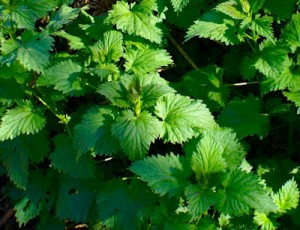
- TEK (traditional environmental knowledge) related to first foods and their habitat;
- Traditional methods of preparation and presentation of first foods; and
- Facets of the entire knowledge/belief/practice process that will help youth and other members of the community find their way back to more healthy foods and diets, healthier ecosystems, and a strengthening of the spiritual connection to food and place.
First Foods Sovereignty Project: From Shoreline to Mountain Tops engages tribal elders in mentoring relations with tribal youth. The agroecological, ethnobotanical, and gastronomical knowledge of Skokomish elders is the heart of our proposed project. The elders have wisdom and knowledge of the medicinal herbs and plants and wild game and foraged species. They will provide essential guidance and service mentoring to the Skokomish youth.
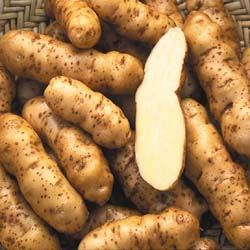
The young people are ready to provide the creative labor and to learn the deeply rooted traditions and practices of gathering, foraging, hunting, and gardening that will revitalize connections to landscape. Delbert Miller (Sm3tcoom), an elder leader and organizer of the project explains the project in eloquent terms:
Our elders will instruct youth in food and place from shoreline to mountaintop. There is a phrase in the Skokomish native language that captures the ultimate goal of this project: Sqa hLab hLits hLa Wa Wa. This means the food for future children.
These projects involve not just the planting of traditional heirloom varieties but the engagement of the tribal youth with elders to create food as an artistic and spiritual endeavor and a community-building practice.
A co-organizer, Tina Kuckkahn-Miller, describes some of the artistic results of this project: “We are probably the only people growing Ozette potatoes in a traditional Salish canoe that doubles as a raised bed.” The Ozette potato was first introduced in the late 1700s to the Makah at Neah Bay by Spanish explorers who brought seed stock from the Chilean Andes.
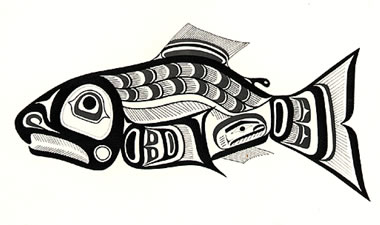
Muckleshoot Food Sovereignty Project
A similar effort is underway in a collaborative project uniting three first nations from the Puget Sound bioregion through the Northwest Indian College. A report from the Northwest Indian Fisheries Commission explains that this project works to assist “tribal members incorporate more traditional foods in their diets.”
The 2011-12 Annual Report offers a remarkable and insightful analysis of the sources of the problems facing tribal communities in their quest for food sovereignty:
In our modern world, tribal members are faced with numerous obstacles in accessing healthy foods. These include: a loss of [traditional resource] rights, loss of land, state and federal regulations, cultural oppression, lack of time and money, environmental toxins, and lack of education.
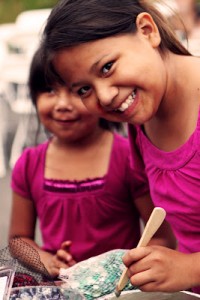
The Muckleshoot project joins teaching with harvesting and farming. It is also unique in making a very clear argument that food sovereignty is a matter of environmental and social justice. We cannot separate access to local, fresh, organic, and culturally-appropriate foods from the struggles to overcome decades of environmental racism that have polluted our waterways, soils, air, and bodies.
The organizers of this project offer an insightful definition of food sovereignty as “the right of people to eat healthy traditional foods that are produced sustainably and don’t harm the environment.” Billy Frank, Chair of the Fisheries Commission explains the history and objectives of this project:
The program grew from a project by the Muckleshoot, Tulalip and Suquamish tribes and the Burke Museum at the University of Washington. The museum developed a list of traditional foods that Indian people ate before non-Indians arrived in western Washington. The Food Sovereignty program helps tribal members make those foods – such as nettles, camas, huckleberries, salmon and wild game – part of their everyday lives.
The project reminds us that to have traditional foods, we must continue to be good natural resources managers. Our treaties recognize that food is at the center of our cultures. Indian tribes are sovereign nations, and part of that sovereignty includes access to the traditional foods needed to keep ourselves and our communities healthy and strong.
This is a definitive statement about the principles of food autonomy: It is not enough to grow your own. The production of food is as much about taking care of the land and other means of our reproduction as foraging, hunting, fishing, and cultivating. Taking care of creation is the first step toward taking care of each other and our homes, the Earth and our own bodies.
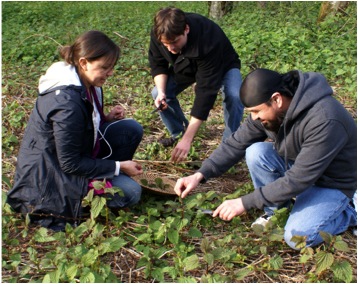
The Muckleshoot community nutritionist is a young scholar activist by the name of Valerie Segrest. Ms. Segrest recently published a book intended for Native American readers entitled, Feeding the People, Feeding the Spirit.
With her co-author (Elise Krohn), she offers a set of eight Traditional Food Principles they developed from the experience of working with the tribal elders in their food sovereignty project:
- Food is at the center of culture
- Honor the food web/chain
- Eat with the seasons
- Eat a variety of foods
- Traditional foods are whole foods
- Eat local foods
- Wild and organic foods are better for health
- Cook and eat with good intention
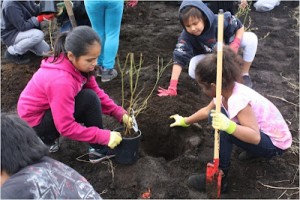
These principles are not just a guide but a set of daily lived practices that can help Native people take responsibility for restoring their own health and well-being. I am reminded of Taiaiake Alfred’s suggestion that we do not preserve our traditions, we live our traditions.
The principal lesson I have learned from these campaigns and projects for food autonomy and healing of our physical and soul wounds is perhaps best expressed by Mohawk organic intellectual, Taiaiake Alfred : “The time to blame the white man, the far away and long ago, is over. People should recognize that the enemy is close enough to touch,”[7] and to taste, I will add.
The colonizer’s food is slowly killing us. Food is the weapon of self-destruction the colonizer placed in our hands and sells us at the Super-Size Me fast food joints and convenience marts.
But food is also the solution. It is our tool for liberation, health, and spiritual healing. Deep food is our weapon – the means to move toward autonomy and the renewal of a living traditional community.
About Devon G. Peña
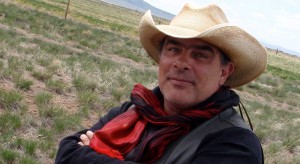 A lifelong activist in the environmental justice and resilient agriculture movements, Devon G. Peña is a Professor of American Ethnic Studies, Anthropology, and Environmental Studies at the University of Washington in Seattle. He also works on the family’s historic acequia farm in San Acacio, Colorado.
A lifelong activist in the environmental justice and resilient agriculture movements, Devon G. Peña is a Professor of American Ethnic Studies, Anthropology, and Environmental Studies at the University of Washington in Seattle. He also works on the family’s historic acequia farm in San Acacio, Colorado.
A pioneering interdisciplinary research scholar and widely-cited author, his most recent books include Mexican Americans and the Environment: Tierra y Vida (U. of Arizona Press, 2005) and The Oxford Encyclopedia of Latinos and Latinas in the United States (senior editor, Oxford University Press, 2005).
Dr. Peña is the Founder and President of The Acequia Institute, the nation’s first Latina/o charitable foundation dedicated to supporting research and education for the environmental and food justice movements.
Read this article as it was originally published here.
________________________________________
Endnotes
1 I have chosen to use the term Abya Yala to refer to the Americas (both North and South). Abya Yala means “land in its full maturity” in the language of the Kuna people of Colombia and Panama. It was Takir Mamani, an indigenous Aymara leader, who first suggested that Abya Yala should be used in place of America by the indigenous peoples of the western hemisphere. For more information go to: http://www.abyayalanet.org/node/3
2 Crosby, A. 2004. Ecological imperialism, 2nd Edition. Cambridge: Cambridge U. Press.
3 Peña, D. G. 2005. Mexican Americans and the environment: Tierra y vida. Tucson: University of Arizona Press, pp. 57-68.
4 Barsh, R. L. 1990. Ecocide, nutrition, and the ‘Vanishing Indian’. In: State violence and ethnicity, ed. P. L. van den Berghe. Niwot: University Press of Colorado, pp. 221-512.
5 Nabhan, G. P. 1998. Diabetes, diet, and Native American foraging traditions. In: Cultures of habitat: On nature, culture, and story. Washington, D.C.: Counterpoint, pp. 197-208.
6 Walters, K., Simoni, J.M., Evans-Campbell T. 2002. Substance use among American Indians and Alaska Natives: Incorporating culture in an ‘indigenist’ stress-coping paradigm. Public Health Reports, 117:1: S104-S117; Walters, K. & Simoni, J. 2002. Reconceptualizing Native women’s health: An ‘indigenist’ stress-coping model. American Journal of Public Health, 92:4:520-525; and Evans-Campbell, T., & Walters, K. L. 2006. Catching our breath: A decolonization framework for healing indigenous families. In: Intersecting child welfare, substance abuse, and family violence: Culturally competent approaches, eds. Rowena Fong, Ruth McRoy, and Carmen Ortiz Hendricks. Alexandria, VA, CSWE Publications. (pp. 266-292).
7 Alfred, T. 2009. Peace, power, righteousness: An indigenous manifesto. Cambridge: Oxford U. Press, p. 61.

What a well thought out goal for our native peoples. As a teacher and founder of 20 plots in a church community garden I know that people of all ages enjoy their contact with the earth. Every school should teach gardening to the children. School lunches should serve organic vegetables and provide salad bars. Eating plant based diets will not only make one healthier but can bring down cholesterol, help one loose weight and avoid or cure type 2 diabetes and stop the progression of other diseases. The “colonizers” food is killing everyone even the “colonizers” themselves. Avoiding meat, sugars (real and artificial) and dairy will help everyone. A daily green drink of fruits and vegetables with almond milk will start one off with energy for the day. Best wishes to all the people and may your gardens be prolific and your health be wellness and energy for many years ahead.
Yvonne M.